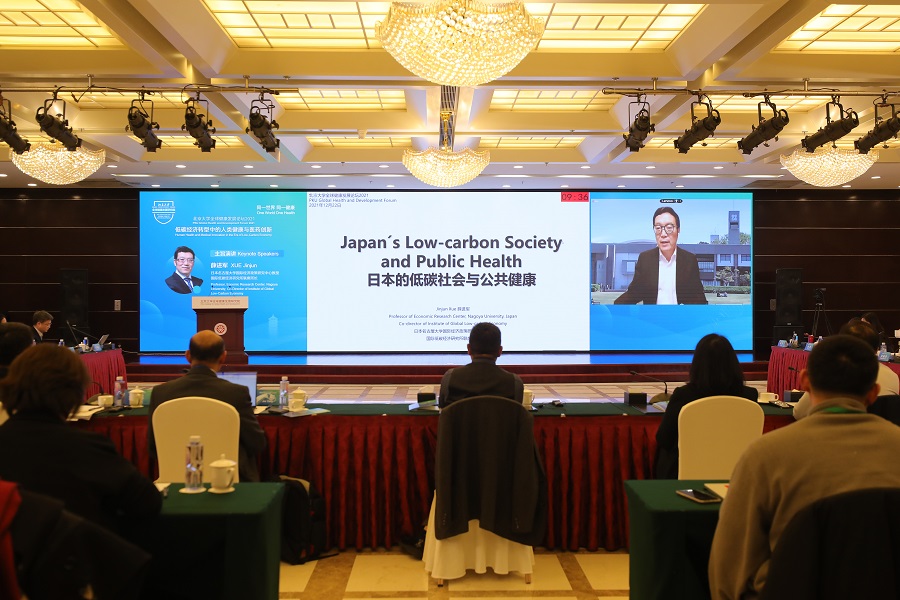
On December 22, 2021, on the first anniversary of the establishment of the Peking University Institute for Global Health and Development (PKU-iGHD), the “2021 Peking University Global Health and Development Forum: Human Health and Medical Innovation in the Era of Low Carbon Economy”was successfully held. Prof.XUE Jinjin, from Nagoya University Econoic Research Center, Co-Director of Institute of Global Low-Carbon Economy delivered a keynote speech at Global Health and Low-Carbon Economic Transition.
It's my pleasure to join this very important international forum. Today, I'm going to share with you my experience, both in China and Japan about the low carbon society. And I will use a case of Japan to talk about the low carbon society and the public health because Japan and China are neighbors, and we can learn from each other. I will talk of five major issues including some indexes of public health in Japan, low carbon society plans in Japan, the public health system and facility in Japan, the Japanese model of epidemic prevention, and finally, some enlightenments from the Japanese experience to other countries, especially to China.
The first is some major indexes of public health in Japan. As you may know already that Japan is a country with a very high life expectancy. The latest statistics show that in 2021, the Japanese women's life expectancy is about 87.74 years old, while for men, a little shorter, 84.64 years old (see Fig.1.). The reason why Japan has one of the highest longevity rates are related to the air quality, environment, lifestyle, and many little things that I will elaborate on later. Currently, the world is still suffering from the COVID-9 pandemic, especially in the United States and European countries. Japan has suffered a lot from last year to the earlier this year, but by later this year, Japan controlled the pandemic successfully. It is beyond our understanding at this time Data yesterday (Dec. 21) shows that there were only 170 new cases of infection in Japan. Tokyo, a large city with a population of 20 million, had only 30 new cases of infection yesterday[1]. We are currently looking at the reasons behind this. What we have known is Japan has a looser approach to control the pandemic, with self-discipline and limited freedom, but people can still go out to do something like shopping or having a drink with friends.
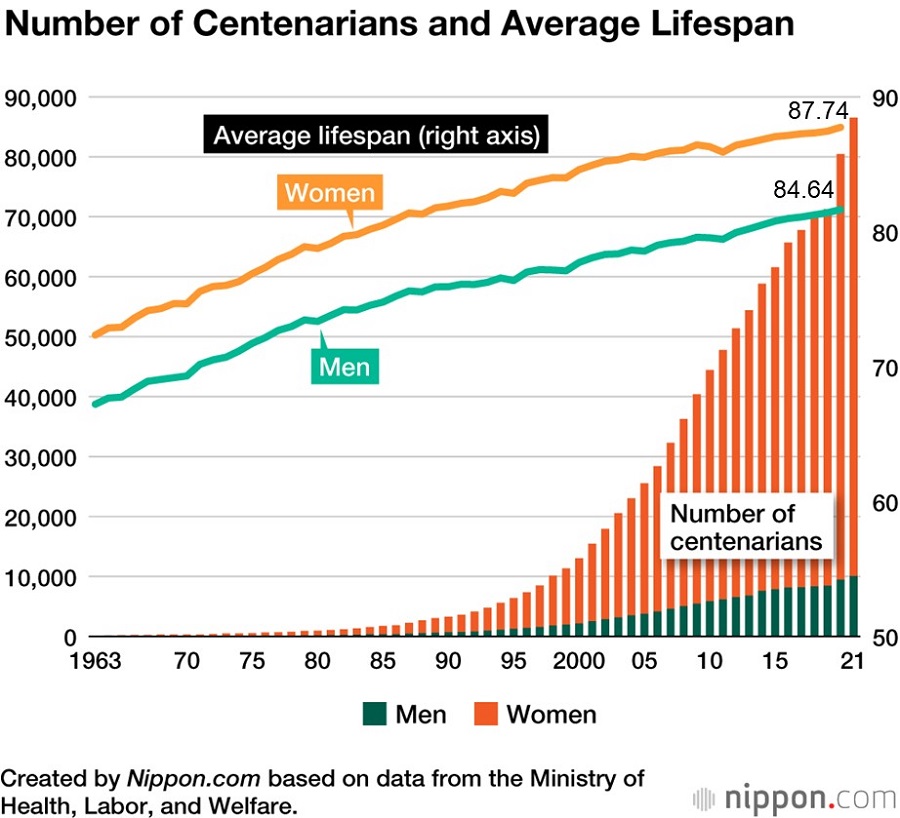
Fig. 1. Life Expectancy in Japan
Professor Gong Peng and other professors talked a lot about the relationship between air pollution and death rate, using the case of China in particular, and many papers on this have been published in the Lancet. In the case of Japan, relevant studies show that Japan has very low death rate from air pollution (PM2.5)
Then we talk about a hot topic, carbon emission peak and carbon neutrality. We know that China promised to get the carbon emission peak in 2030 and the carbon neutrality in 2060. While Japan has passed its peak in 2013 already and from now on, Japan has roughly 30 years to reach its new target of carbon neutrality.
The second part is low-carbon society plans in Japan. On the issue of carbon emissions, as we know, the British government was the first to introduce the concept of “Low Carbon Economy”, while in 2011 the Japanese government launched the “Low Carbon Society” initiative, which covers all aspects of society, including land use, nature environment, transportation, industry and business, residence life, etc. In 2015, the Japanese government issued another plan, the Hydrogen Society Plan. Hydrogen power is thought the power of the future without any carbon emissions. Companies, especially Toyota, are promoting this new advanced energy technology. This year, the Japanese government announced another plan called the Decarbonized Society Plan. As the data shows, Japan has been successful in dealing with the carbon emission and passed its carbon peak in 2013, while China and India have a hard task to accomplish from now on.
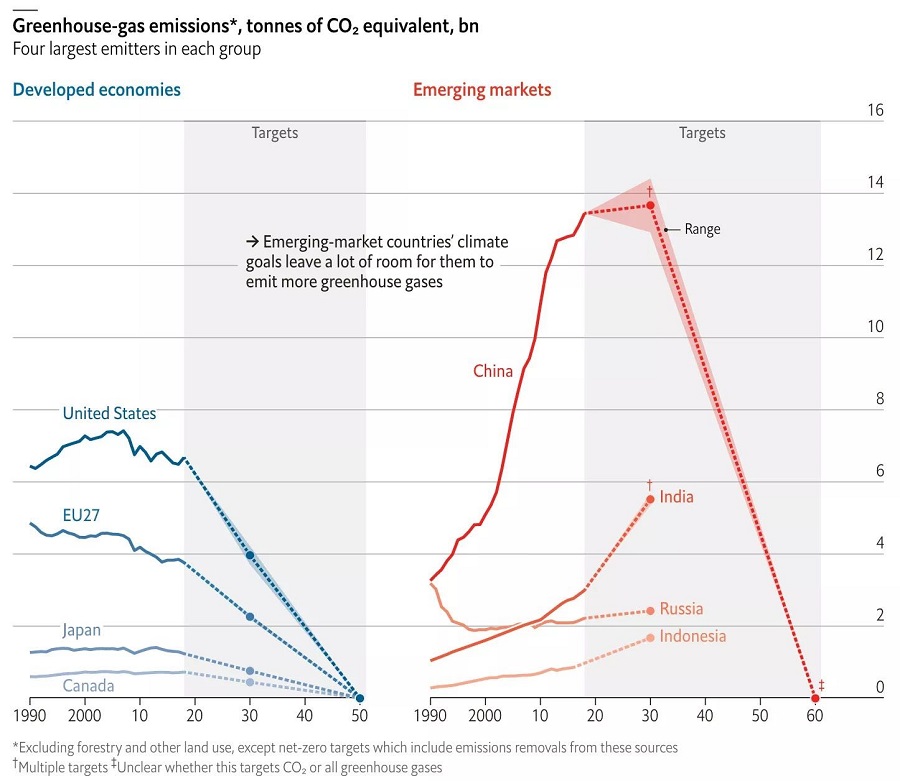
Source:https://ourworldindata.org/co2-and-other-greenhouse-gas-emissions
Fig. 2. Greenhouse-gas emissions, tonners of CO2
The third part is Japan's experiences of public health, which I will elaborate with some examples. Actually, Japan now has a cleaner and better environment than that in the past. In the 1960s, when Japan was experiencing rapid economic growth, it also suffered severely from the Four Big Pollution Diseases, especially Yokkaichi Disease or Cough, caused by environment pollution. Since then, Japan has changed its development stragegy and gave the the first priority to environment protection. In late 1960 and errly 1970, Japan made many legislations and policies to improve the environment.
Amaong these policies, one important step was the oversea industrial transformation in the late 1960s. Prof.Akamatsu initiated a very famous theory named Flying Geese Paradigm to explain this process of industrial structural transformation that made Japan lead among Asian countries in terms of economic development. In 1970s, Japan transferred many industries with high pollution, high carbon emission and high energy consumption to other countries. Of course, this kind of industry was beneficial to those countries, such as China by promoting their economic grwoth, but also created some issues such as environment pollution and carbon linkage.
There are many things that made Japan’s environment better and induced it to be a beautiful country. One of these things is the industrial structure change. In Japan, the service sector is the largest share of GDP. The share of manufacturing in Japan is relatively small while agriculture has the smallest share below 10%. In contrast, China has a relatively larger share of manufacturing in GDP, which results in more carbon emissions.
In terms of low-carbon transportation, Tokyo Subway System is the most complex and efficient underground transportation system in the world, which has led to a significant reduction in the use of private cars and thus lower carbon emissions.
As for public facilities, one example is Japan’s toilet revolution which brought technological innovations that have led to a well-known clean toilet environment Especially the water wash toilet prevented millions of people from Infectious disease and contributed to the public health.
Regarding the Japanese healthcare system, which called Medial Hospital System, it has one of the highest ratios of hospital beds and medical doctors (per 1,000 people) (Fig. 3). There are three types of hospitals in Japan. One is large hospitals, such as The University of Tokyo Hospital,Nagoya University Hospital. They treat major illnesses and do not treat minor illness such as colds, which could be treated at a small clinic. The third type of hospitals treats the type of illnesses that fall between major illnesses and minor illness.
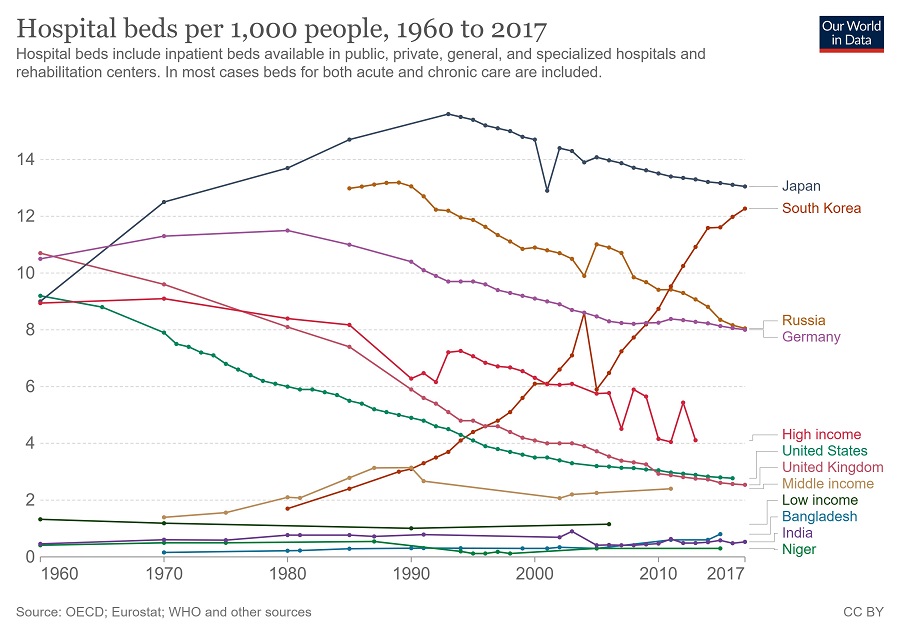
Fig. 3. Hospital bed ratios of selected countries.
This kind of functional division of hospitals, reduces the burden on large hospitals. In contrast to Beijing and Xi’an, I went to the hospital with a cold and then it was very crowded, and the waiting time was really long. The reason is that there are not enough small clinics to treat minor illnesses like the flu that many people may get. In addition, medical equipment in Japan is very advanced such as computed tomography (CT) machines, (magnetic resonance imaging (MRI) scaner, etc. Such high-tech medical equipment can help doctors detect patients’ diseases earlier and start treatment earlier, which is closely related to public health as well as longevity.
Let’s look at Japanese food. The paanese food such as Sushi, Tofu, Natto, Soba, is not only delicious, but also low-carbon.. This diet structure has contributed a lot to public health.
The fourth part is about the Japanese model of epidemic prevention. The Japanese model has both the government dominance of East Asian authoritarianism and the democracy and freedom of Western capitalism. Mask wearing habit has protected lots of lives during this pandemic. In many countries this is politicized, but in Japan no one would argue the necessity of wearing a mask. Also, unlike other countries, Japan does not greet with a kiss, hug or handshake, but simply with a bow, which avoids physical touch and thus protects people from being infected by the virus.
The final part is about enlightenments from the Japanese experience. First, it's about decoupling GDP with CO2. Compared to the year of 1990, Japan achieved GDP growth (take 1990 as 100) with a rapid reduction in consumption-based and production-based CO2 emissions (Fig. 4). China will also pursue this process in the future to decouple its economic growth from carbon emissions.
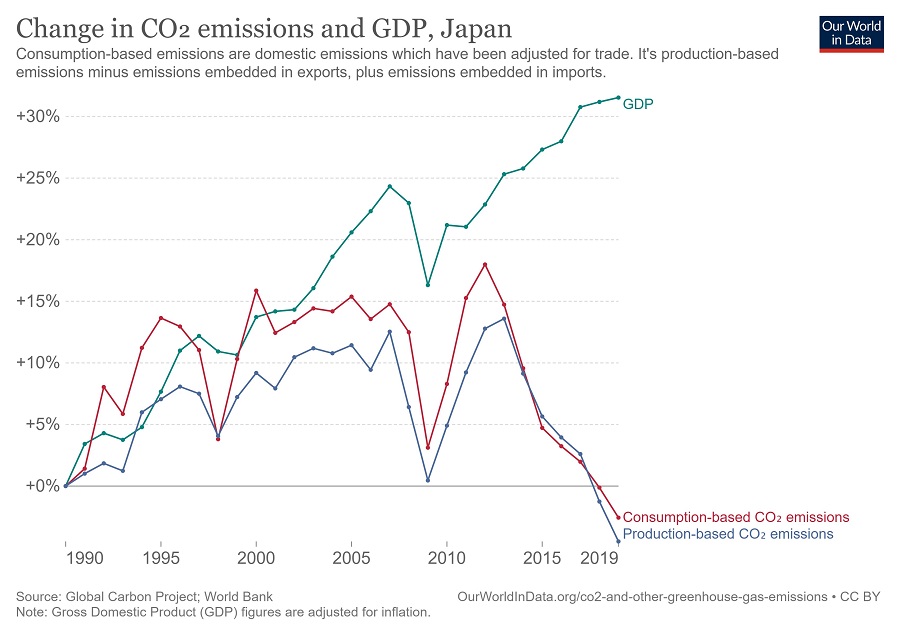
Fig. 4. GDP decoupling with CO2 emisions
The second is technological innovation. In recent days, scholars, government leaders and politicians mainly focusing on carbon mitigation onpolicies but ignoring the importance of technological innovation to achieve carbon neutrality. According to Japanese experience, technological progress plays a crucial role in reducing carbon emissions. In addition, according to the statistics of GDP per unit of energy use, Japan has a relatively higher carbon energy productivity than China (Fig.5). China has a lot of room to improve its technology, to reduce carbon emission and improve the energy efficiency.
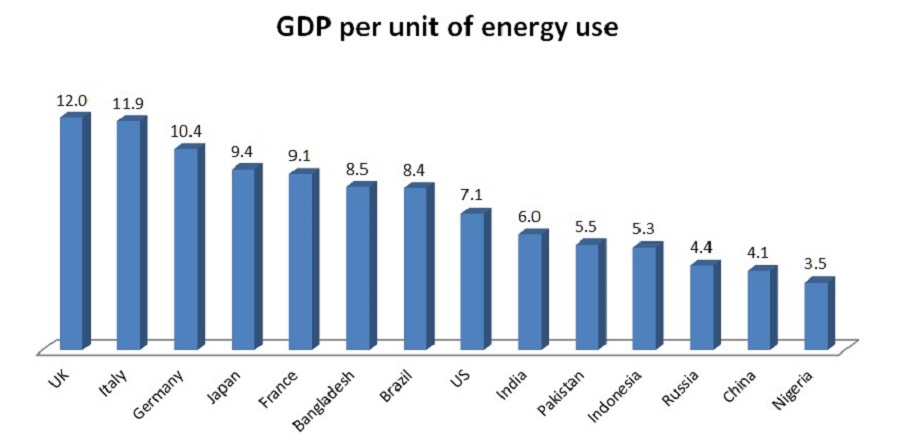
Fig. 5 Engergy Productivity
Source: https://en.wikipedia.org/wiki/Energy_intensity#/media/File:GDP_per_unit_of_energy_use.png
Finally, as we know, health involves many aspects, such as nutrition, lifestyle, environment, hygiene, diet, friends, healthcare, sleep, stress management, sports, and exercise. As Professor Gong Peng said, health also includes mental health. This concepts is gaining popularity in both Japan and China. Just as Japan used to learn a lot from China in the past, we should learn from each other and have closer collaborations. Hopefully some of Japan’s experiences can be used to help China build a low-carbon society and achieve carbon neutrality.Japan has 28 Nobel Prize winners, six of them are from Nagoya University. These professors are not only doing scientific research, but also doing innovations. For example, Professor Hiroshi Amano is one of the innovators of LED light and now is conducting research on the new materials for future energy. This type of products can help to reduce carbon emissions while improving people’s standard of living .
Data source:
The World Bank.
Ministry of Health, Labor, and Welfare of Japan, 2021. https://hazard.yahoo.co.jp/article/20200207
https://ourworldindata.org
https://time.com/6110774/carbon-emissions-economy
Nippon.com https://www.meti.go.jp/press/2020/04/20200413001/20200413001.html
https://www.sciencedirect.com/science/article/pii/S0269749119356660
Eurostat.
OECD.
[1] However, from mid of January 2022, the fifth wave of the epidemic in Japan has intensified, and the number of new infections has gradually increased, and stricter epidemic prevention measures such as restricting gatherings and catering business hours have to be implemented again.